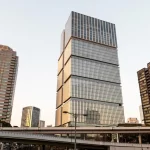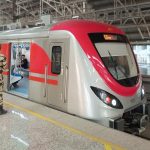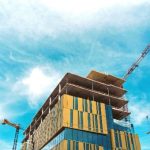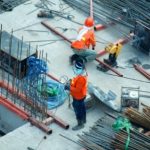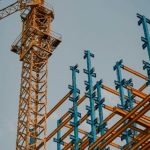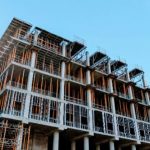Mumbai, often referred to as the “City of Dreams,” is a bustling metropolis with a diverse population and a fast-paced lifestyle. The city is known for its complex and congested road networks, which have historically posed challenges for both daily commuters and the real estate market. However, the introduction and expansion of the Mumbai Metro network have ushered in a new era of urban mobility, significantly impacting the real estate landscape across the city and its suburbs.
The Mumbai Metro network, which is poised to become one of the most extensive urban transit systems in India, has not only enhanced connectivity across various parts of the city but has also played a pivotal role in reshaping the real estate market. As new metro lines continue to be constructed and existing ones expanded, areas that were once considered remote or difficult to access are now witnessing a surge in real estate development. This article delves into the profound impact of the Mumbai Metro network on the city’s real estate market, analyzing key locations, connectivity, prime real estate hotspots, and the growing ease of connecting Mumbai to its suburban regions.
The Mumbai Metro Network: An Overview of Its Evolution and Expansion
The Genesis of the Mumbai Metro Network
The Mumbai Metro project was conceived as a solution to the city’s growing traffic congestion and overburdened local train network. The metro was envisioned as a modern, efficient, and environmentally friendly mode of transportation that would provide seamless connectivity across the city and its surrounding suburbs. The first metro line, Line 1 (Versova-Andheri-Ghatkopar), was inaugurated in June 2014, marking the beginning of a new era in Mumbai’s urban transit system.
Since then, the Mumbai Metro network has expanded rapidly, with multiple lines under construction or in various stages of planning. The network is designed to cover a vast area, connecting key business districts, residential neighborhoods, and suburban regions, thereby reducing travel time and enhancing accessibility.
Expansion Plans and Current Status
As of 2024, the Mumbai Metro network comprises several operational lines, with many more in the pipeline. Some of the key lines include:
- Metro Line 1 (Versova-Andheri-Ghatkopar): This line connects the western suburb of Versova to the eastern suburb of Ghatkopar, passing through the bustling commercial hub of Andheri.
- Metro Line 2A (Dahisar-D.N. Nagar): This line, along with Metro Line 7, forms a critical part of the Western Suburban Metro Corridor, connecting the northern suburbs to Andheri.
- Metro Line 7 (Dahisar East-Andheri East): This line runs parallel to Line 2A, further enhancing connectivity between the western suburbs and central Mumbai.
- Metro Line 3 (Colaba-Bandra-SEEPZ): Currently under construction, this underground line will connect the southern tip of Mumbai (Colaba) to the northern suburbs, passing through key business districts like BKC and Lower Parel.
The ongoing expansion of the metro network is expected to cover more areas, including the eastern suburbs, the Navi Mumbai region, and beyond. The completion of these lines will create a comprehensive metro network that will serve as the backbone of Mumbai’s public transportation system, significantly influencing the city’s real estate dynamics.
Impact of Metro Connectivity on Mumbai’s Real Estate Market
Metro as a Catalyst for Real Estate Growth
The introduction of the Mumbai Metro network has had a profound impact on the real estate market, serving as a catalyst for growth in various parts of the city. The enhanced connectivity provided by the metro has made previously inaccessible or less desirable areas more attractive to homebuyers and investors. The following sections explore how metro connectivity has influenced different segments of the real estate market.
Residential Real Estate: A Surge in Demand for Properties Near Metro Stations
One of the most significant impacts of the Mumbai Metro network has been on the residential real estate market. Properties located near metro stations have witnessed a substantial increase in demand, driven by the convenience and time savings offered by the metro. Homebuyers are increasingly seeking residences that offer easy access to metro stations, leading to a rise in property prices and new residential developments in these areas.
- Andheri: Andheri, particularly the areas around the Andheri East metro station, has seen a surge in demand for residential properties. The ease of connectivity to both the western and eastern suburbs via Metro Line 1 has made Andheri a preferred location for homebuyers. Additionally, the presence of commercial hubs in the vicinity has further boosted the demand for residential properties.
- Ghatkopar: Ghatkopar, located at the eastern end of Metro Line 1, has also experienced a real estate boom. The area, which was once considered a distant suburb, is now highly sought after due to its excellent connectivity to both the central and western parts of the city. The metro has not only increased the demand for residential properties but has also led to the development of new residential projects.
- Powai: While Powai is not directly connected by the metro, its proximity to the Saki Naka metro station (on Line 1) has made it an attractive location for homebuyers. The area has seen a steady increase in property prices, driven by the convenience of metro connectivity and the presence of high-quality residential complexes.
Commercial Real Estate: Boosting Accessibility and Business Growth
The Mumbai Metro network has also had a significant impact on the commercial real estate market. Businesses are increasingly looking to set up offices in locations that offer easy access to metro stations, allowing employees to commute conveniently from various parts of the city. This trend has led to a rise in demand for commercial properties near metro stations, particularly in key business districts and suburban areas.
- Bandra-Kurla Complex (BKC): BKC, one of Mumbai’s premier business districts, is set to benefit greatly from the upcoming Metro Line 3, which will connect it to both South Mumbai and the western suburbs. The improved connectivity is expected to attract more businesses to BKC, driving up demand for office spaces and commercial properties in the area.
- Andheri: Andheri, with its strategic location and excellent metro connectivity, has emerged as a major commercial hub in the suburbs. The area is home to several multinational companies, IT firms, and co-working spaces, making it a prime location for businesses. The availability of metro connectivity has further enhanced Andheri’s appeal as a commercial destination.
- Goregaon: Goregaon, once known primarily as a residential area, has seen a transformation into a commercial hotspot, thanks to the upcoming metro lines. The area is now attracting businesses and investors looking for affordable office spaces with good connectivity to other parts of the city.
Real Estate Prime Locations: The Metro Effect
Identifying Metro-Driven Real Estate Hotspots
The expansion of the Mumbai Metro network has led to the emergence of new real estate hotspots across the city. These locations, characterized by their proximity to metro stations and improved connectivity, are witnessing rapid development and a surge in property prices. The following sections highlight some of the key metro-driven real estate hotspots in Mumbai.
Andheri: The Western Suburb’s Real Estate Powerhouse
Andheri, particularly the areas around the Andheri East and Andheri West metro stations, has become one of Mumbai’s most sought-after real estate destinations. The area’s strategic location, combined with its excellent metro connectivity, has made it a preferred choice for both residential and commercial developments.
- Residential Market: Andheri offers a wide range of residential options, from high-end luxury apartments to more affordable housing complexes. The area’s connectivity to other parts of the city via Metro Line 1 has significantly boosted demand for residential properties, leading to an increase in property prices.
- Commercial Market: The presence of several commercial hubs, including corporate offices, IT parks, and retail outlets, has further enhanced Andheri’s appeal as a real estate powerhouse. The metro connectivity has made it easier for businesses to attract talent from across the city, driving up demand for commercial properties.
Ghatkopar: From Suburban Outpost to Real Estate Hotspot
Ghatkopar, once considered a distant suburb, has undergone a remarkable transformation thanks to the introduction of Metro Line 1. The area’s improved connectivity to both the western and central parts of Mumbai has made it a highly desirable location for real estate investments.
- Residential Market: Ghatkopar’s residential market has seen significant growth in recent years, with several new housing projects being launched in the area. The metro connectivity has made it easier for residents to commute to different parts of the city, driving up demand for residential properties.
- Commercial Market: The commercial real estate market in Ghatkopar has also benefited from the metro connectivity, with new office spaces, retail outlets, and co-working spaces being developed. The area is now attracting businesses looking for affordable commercial properties with good connectivity.
Powai: The Emerging IT and Residential Hub
Powai has emerged as a key real estate destination in Mumbai, driven by its proximity to the Saki Naka metro station and its thriving IT ecosystem. The area’s serene environment, modern infrastructure, and metro connectivity have made it a popular choice for both residential and commercial developments.
- Residential Market: Powai offers a mix of high-end luxury apartments and more affordable housing options, catering to a diverse range of homebuyers. The area’s proximity to the metro has further enhanced its appeal, leading to a steady increase in property prices.
- Commercial Market: Powai is home to several IT parks, corporate offices, and co-working spaces, making it an attractive location for businesses. The metro connectivity has made it easier for employees to commute from different parts of the city, driving up demand for commercial properties in the area.
Suburban Growth: Connecting Mumbai to Its Expanding Suburbs
The Suburban Real Estate Boom
The expansion of the Mumbai Metro network has not only impacted the real estate market within the city but has also driven growth in the suburban regions. The improved connectivity to the suburbs has made these areas more accessible and attractive to homebuyers and investors, leading to a real estate boom in several suburban locations.
Navi Mumbai: The Planned City’s Real Estate Renaissance
Navi Mumbai, a planned city developed as a satellite town to Mumbai, has seen a resurgence in its real estate market, thanks to the upcoming metro connectivity. The Navi Mumbai Metro, which is expected to be operational in the coming years, will connect the city to key business districts and residential neighborhoods in Mumbai, driving up demand for properties in the area.
- Residential Market: Navi Mumbai offers a range of residential options, from affordable housing complexes to luxury apartments. The upcoming metro connectivity is expected to further boost demand for residential properties, particularly in areas like Vashi, Kharghar, and Panvel.
- Commercial Market: The commercial real estate market in Navi Mumbai is also expected to benefit from the metro connectivity, with new office spaces, retail outlets, and IT parks being developed in the area. The improved connectivity to Mumbai will make Navi Mumbai an attractive location for businesses looking to expand their operations.
Thane: The Emerging Real Estate Giant
Thane, located to the northeast of Mumbai, has emerged as a major real estate destination in recent years. The ongoing expansion of the Mumbai Metro network is expected to further enhance Thane’s appeal, making it one of the most sought-after locations for homebuyers and investors.
- Residential Market: Thane offers a wide range of residential options, from affordable housing complexes to high-end luxury apartments. The upcoming metro connectivity will make it easier for residents to commute to different parts of Mumbai, driving up demand for residential properties in the area.
- Commercial Market: Thane’s commercial real estate market is also expected to benefit from the metro connectivity, with new office spaces, retail outlets, and co-working spaces being developed in the area. The improved connectivity will make Thane an attractive location for businesses looking for affordable commercial properties with good accessibility.
Kalyan-Dombivli: The Future of Suburban Living
Kalyan-Dombivli, located to the northeast of Mumbai, is another suburban area that is expected to benefit from the upcoming metro connectivity. The area’s affordability, combined with the improved accessibility provided by the metro, is expected to drive significant growth in the real estate market.
- Residential Market: Kalyan-Dombivli offers a range of affordable housing options, making it an attractive location for homebuyers looking for budget-friendly properties. The upcoming metro connectivity is expected to further boost demand for residential properties in the area, leading to new housing developments.
- Commercial Market: The commercial real estate market in Kalyan-Dombivli is also expected to benefit from the metro connectivity, with new office spaces, retail outlets, and industrial parks being developed in the area. The improved connectivity to Mumbai will make Kalyan-Dombivli an attractive location for businesses looking to expand their operations.
The Future of Mumbai’s Real Estate Market: A Metro-Driven Transformation
Predictions and Projections
As the Mumbai Metro network continues to expand, its impact on the real estate market is expected to grow even further. The following are some key predictions and projections for the future of Mumbai’s real estate market:
- Increased Demand for Properties Near Metro Stations: The demand for residential and commercial properties near metro stations is expected to continue rising, driven by the convenience and time savings offered by the metro. Homebuyers and investors will increasingly seek properties that offer easy access to metro stations, leading to higher property prices in these areas.
- Emergence of New Real Estate Hotspots: As new metro lines are completed, new real estate hotspots are expected to emerge across the city. Areas that were previously considered remote or less desirable will become more accessible, driving demand for properties and leading to new developments.
- Suburban Growth: The ongoing expansion of the metro network is expected to drive significant growth in Mumbai’s suburban regions. Suburbs like Navi Mumbai, Thane, and Kalyan-Dombivli will become increasingly attractive to homebuyers and investors, leading to a real estate boom in these areas.
- Shift in Commercial Real Estate: The commercial real estate market is also expected to undergo a transformation, with businesses increasingly looking for office spaces and commercial properties near metro stations. This trend will drive demand for commercial properties in key business districts and suburban areas, leading to new developments and higher property prices.
Challenges and Considerations
While the expansion of the Mumbai Metro network presents significant opportunities for the real estate market, it also poses certain challenges and considerations:
- Infrastructure Development: The rapid expansion of the metro network will require significant infrastructure development, including the construction of new roads, bridges, and transportation hubs. The success of the metro-driven real estate market will depend on the timely completion of these infrastructure projects.
- Environmental Impact: The construction of new metro lines and real estate developments may have environmental impacts, including the displacement of green spaces and the loss of biodiversity. It will be important for developers and city planners to consider these impacts and take steps to mitigate them.
- Affordability: While the metro connectivity is expected to drive up property prices, it is also important to ensure that affordable housing options are available for all segments of the population. The city must strike a balance between promoting real estate growth and ensuring that housing remains accessible to all.
Conclusion: The Metro Network as a Game-Changer for Mumbai’s Real Estate Market
The expansion of the Mumbai Metro network is undoubtedly a game-changer for the city’s real estate market. By enhancing connectivity, reducing travel time, and making previously remote areas more accessible, the metro has transformed the way people live, work, and invest in Mumbai. As new metro lines continue to be constructed and existing ones expanded, the impact on the real estate market is expected to grow even further, creating new opportunities and challenges for developers, investors, and homebuyers alike.
Mumbai’s real estate market is on the cusp of a metro-driven transformation, with key locations, prime real estate hotspots, and suburban growth areas all set to benefit from the improved connectivity provided by the metro. As the city continues to evolve and expand, the metro network will play a central role in shaping the future of Mumbai’s urban landscape, making it an essential factor for anyone looking to navigate the city’s real estate market in the years to come.




